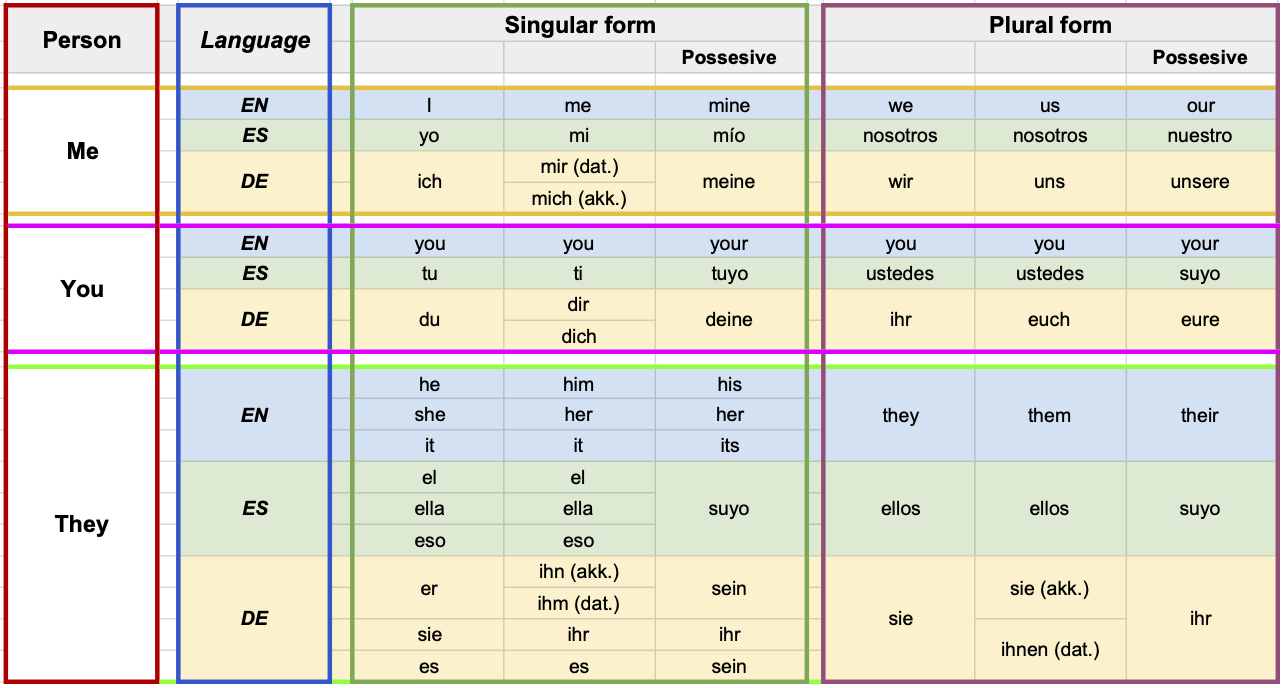In his book, The Loom of Language, LOL from now onwards, Bodmer gives advice on strategies for learning a modern language.
Disclosure: Some of the links below are affiliate links. This means that if you click through and make a purchase, I may earn a small commission at no extra cost to you.
Here’s what Bodmer has to say about learning a modern language:
… we can lighten the tedium of getting a reading knowledge of a language, or of writing it intelligibly, if we concentrate first on learning:
- flexional derivatives least easy to recognize, when we look up the standard form given in a dictionary
- flexional derivatives which still affect the meaning of a statement
To the first class belong the personal pronouns. It should be our first task to memorize them.
I personally don’t enjoy rot memorization exercises, but I found it entertaining to make a table to help me visualize the different forms of the pronouns. The table is inspired on Bodmer’s suggestions, however, the tables in LOL contain forms of the pronouns used in old English, which seem not so relevant today. Therefore, I have omitted those forms in the table below.

The table is also inspired by an answer I found in the English Language Stack Exchange while trying to decipher the difference between the old English pronouns thou and thee. In find the paradigm proposed very intuitive and easy to remember.
The dimensions of pronouns
Pronouns can belong to discrete categories along two dimensions:
- Who is being referred to
- How many are being referred to
For the Who dimension, I have used the labels:
- I, to refer to the speaker itself
- You, to refer directly to someone other than the speaker
- They, to refer indirectly to someone other than the speaker
For the How many dimension, I have used the labels:
- Singular form to refer to a single individual, e.g., I, you, he/she/it.
- Plural form to refer to a group, e.g., we, you, they.
References
- Bodmer, F., & Hogben, L. T. The Loom of Language. 1985. ISBN-10: 039330034X, ISBN-13: 978-0393300345. Buy on Amazon
- What is the difference between “thee” and “thou”?
